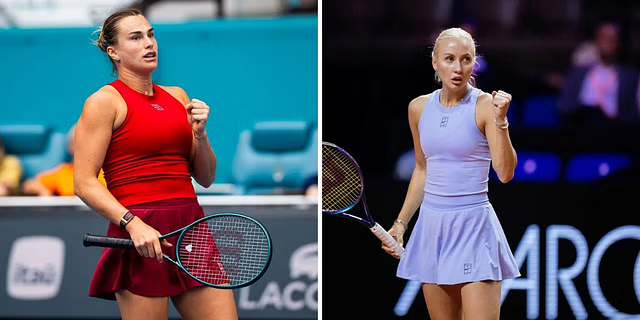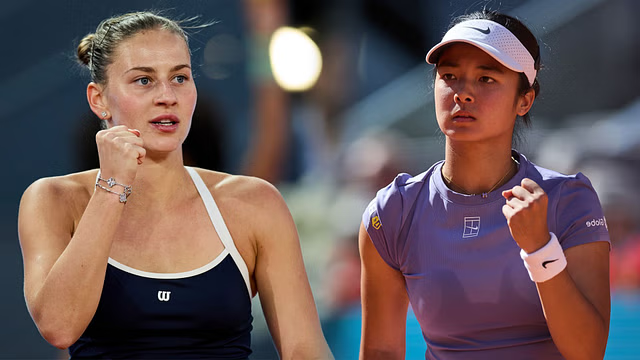A Golden Era for Polish Tennis
Poland has quietly built a tennis revolution. While the nation has long flirted with success—producing notable players like Agnieszka Radwańska—it’s now officially arrived at the forefront of the women’s game. For the first time in WTA history, three Polish women are ranked inside the Top 30. A feat that’s both statistically rare and emotionally resonant.
This isn’t just a moment. It’s a movement.
Let’s dive into the rise of Iga Świątek, Magda Linette, and Magdalena Fręch—three players on different trajectories but united by a national pride and a relentless drive to succeed.

Iga Świątek: The Standard Bearer
You can’t talk about Polish tennis without mentioning Iga Świątek, the current world No. 1 and reigning queen of consistency. Since exploding onto the global stage with her Roland Garros title in 2020, Świątek has rewritten the expectations for Eastern European tennis stars.
At just 23 years old, Iga has already racked up multiple Grand Slam titles, set winning streak records, and become a true global ambassador for Polish sport. Her game is a hypnotic blend of athleticism, mental clarity, and that rare ability to make difficult things look easy. But perhaps more impressive than her accolades is the grace with which she handles pressure.
Off-court, she’s known for her bookish nature, mental health advocacy, and mature presence. On-court, she’s a force of precision and pace. Świątek has elevated Polish tennis to new heights—creating a halo effect for those coming up behind her.
And now, they’re arriving.
Magda Linette: The Veteran Who Refused to Fade
While Świątek stole headlines, Magda Linette was quietly building a legacy of her own. At 32, she’s not only achieved a career-high ranking inside the Top 30—she’s redefined what it means to peak late in a sport that often skews young.
Linette’s breakout moment came at the 2023 Australian Open, where she surged to the semifinals, defeating top seeds with poise and strategy. That run didn’t just boost her ranking—it shifted how the tennis world viewed her. No longer just a solid tour-level player, Linette was now a threat in the second week of Slams.

What makes Linette’s story so compelling is her journey through the shadows. Years of grinding, injuries, and near-misses forged a player with iron resolve. While many would have faded, Linette doubled down. Her rise to the Top 30 is not just a stat—it’s a statement. Consistency matters. Perseverance pays.
And now, she stands proudly beside Świątek—not as a supporting act, but as a fully-fledged headliner in her own right.
Magdalena Fręch: The Breakout Star
The most surprising entry into this elite Polish trio is undoubtedly Magdalena Fręch. Long considered a talented but inconsistent player hovering around the Top 100, Fręch has found her rhythm in 2024 and broken into the Top 30 with a string of strong showings on both hard and clay courts.
At 26, Fręch has finally bridged the gap between promise and performance. Her strengths lie in her court craft, her mobility, and her shot selection. She doesn’t overpower opponents—she outsmarts them. Her playing style has matured, with improved serve consistency and tactical awareness.
Perhaps most importantly, Fręch has gained the belief that she belongs on the big stage. And belief is everything in tennis.
She may not yet have the same name recognition as Świątek or Linette, but that’s changing fast. With WTA 500 quarterfinals and a couple of Top 10 wins under her belt this season, Fręch is no longer flying under the radar.
Why This Moment Matters
This historic alignment—three Polish women in the WTA Top 30—speaks volumes. It isn’t just a national milestone. It’s an example of how a country can transform into a tennis powerhouse through vision, development, and individual determination.
Here’s why it matters:
- Representation: Young girls in Poland now see not one, but three women competing at the highest level. Representation breeds aspiration. This moment will inspire a new generation to pick up a racquet.
- Validation of Development Programs: The Polish Tennis Federation has invested in junior development and infrastructure. Świątek’s father, Tomasz, famously built a system around Iga’s growth. Others followed suit. We’re seeing the fruits of that labor.
- Cultural Shift: Tennis is becoming mainstream in Poland. Sold-out stadiums in Warsaw, Polish fans traveling for WTA events, and media coverage all reflect a growing cultural embrace of the sport.
- Global Recognition: This isn’t just a local headline—it’s an international achievement. The tennis world is taking notice of Poland’s dominance.
Different Paths, Same Pride
What’s truly beautiful about this moment is how different these women are—yet how unified they feel in purpose.
- Świątek, the prodigy turned powerhouse, redefining dominance.
- Linette, the late bloomer, proving that it’s never too late to shine.
- Fręch, the quiet riser, turning potential into proof.
They didn’t come up together through the same system. They weren’t part of one golden junior class. They don’t even share the same playing styles or on-court temperaments.
And yet—they represent a single, resounding message: Polish women belong at the top of tennis.
Social Media Buzz & National Celebration
On social platforms, this milestone has sparked joy and pride across Poland. The hashtags #PolishPower, #WTAHistory, and #TeamPoland have trended, with fans and players alike celebrating the breakthrough. Świątek posted a group photo with Linette and Fręch after their recent success in the Billie Jean King Cup qualifiers, captioning it: “Stronger together. Proud to wear the white and red.”
Linette reposted it with a heart and the Polish flag emoji. Fręch added: “Let’s keep climbing.”
Even Polish President Andrzej Duda tweeted his congratulations, calling it “a proud moment for Polish sport.”
National broadcasters have shifted airtime toward WTA matches, with more interviews, features, and live coverage of Polish players than ever before.
What Comes Next?
This milestone may feel like a peak—but it’s really a foundation.
- Świątek remains a Grand Slam favorite and the face of the WTA Tour.
- Linette is pushing for a Top 20 finish and deeper Slam runs.
- Fręch is aiming to solidify her place and perhaps grab her first WTA title.
And don’t forget: There’s talent bubbling under the surface, too. Juniors like Weronika Ewald and Martyna Kubka are watching, learning, and dreaming. This isn’t the end—it’s the beginning of a golden era for Polish women’s tennis.

Final Thoughts: A Moment Worth Savoring
Tennis is often a sport of individuals. But moments like these remind us of the power of collective achievement.
Three Polish women in the WTA Top 30. Three stories of grit, growth, and greatness. One historic chapter being written—on clay, on hard, on grass. And in the hearts of millions of proud fans back home.
Let’s savor this. Let’s celebrate it. And let’s get ready for more.
Because the way things are going, “Poland” on a WTA scoreboard is about to become the new normal.


